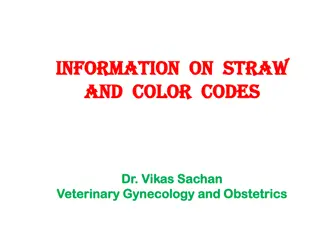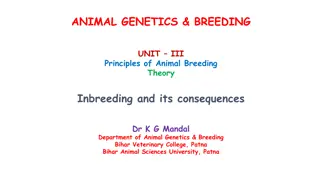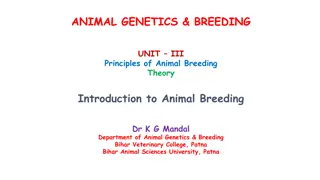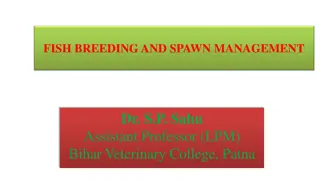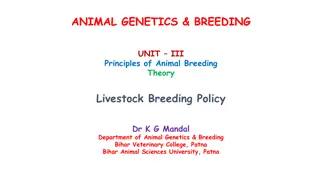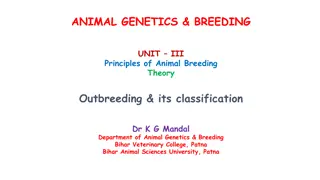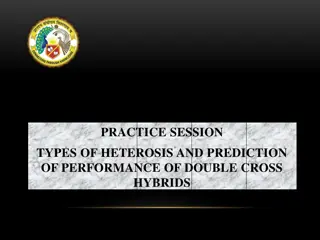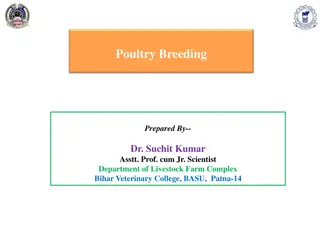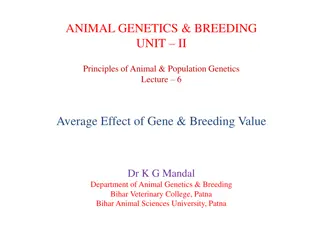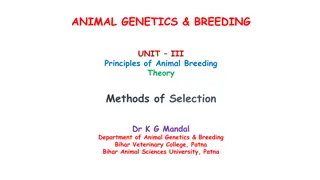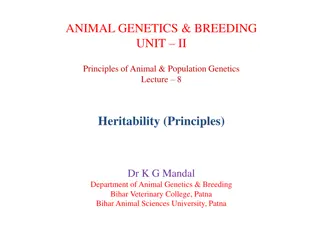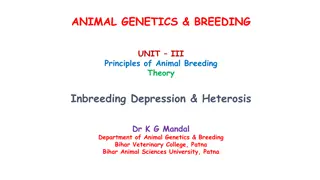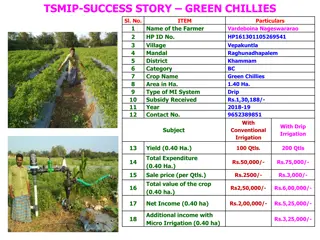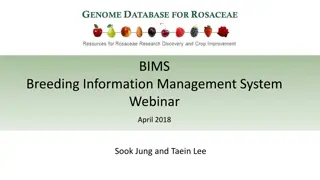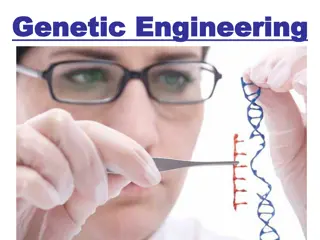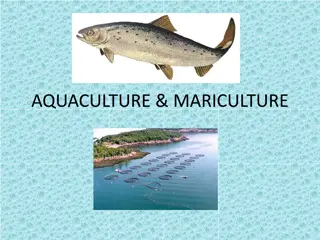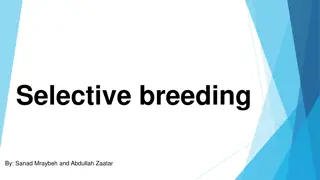Heterosis Breeding in Cabbage: A Comprehensive Overview
Cabbage, a popular vegetable, has evolved from its non-heading types to heading varieties. Its growth has expanded to various regions in India due to heat-tolerant varieties and F1 hybrids. Cabbage is highly cross-pollinated, with up to 73% cross-pollination due to self-incompatibility. Bees and flies play a role in pollination, and various methods are used for F1 hybrid production. Hand pollination is not cost-effective for commercial cabbage seed production.
Download Presentation

Please find below an Image/Link to download the presentation.
The content on the website is provided AS IS for your information and personal use only. It may not be sold, licensed, or shared on other websites without obtaining consent from the author.If you encounter any issues during the download, it is possible that the publisher has removed the file from their server.
You are allowed to download the files provided on this website for personal or commercial use, subject to the condition that they are used lawfully. All files are the property of their respective owners.
The content on the website is provided AS IS for your information and personal use only. It may not be sold, licensed, or shared on other websites without obtaining consent from the author.
E N D
Presentation Transcript
HETEROSIS BREEDING IN CABBAGE G.Harika
HETEROSIS BREEDING IN CABBAGE
Botanical Description Cabbage: Brassica oleracea var capitata 2n:18 Family: Cruciferae Cultivar group :Capitata Origin: Mediterranean region
INTRODUCTION Cabbage is one of the most popular temperate vegetables and occupies fourth position among vegetables in India as well as the world Original type was non-heading type and later heading types were evolved.
Traditionally, crop was grown in southern, eastern and costal areas in India. With development of heat tolerant varieties and F1 hybrids, it spread to other sub tropical and non- traditional areas for cultivation throughout the year except for one or two months having extreme high or low temperatures.
Cabbage fruit -siliqua Cabbage inflorescence
It is highly cross pollinated and degree of cross pollination is as high as 73.0%. Cross pollination is mainly due to self-incompatibility. Protogyny is very conspicuous in cabbage and stigma remains receptive for five days before anthesis. Cytoplasmic and genetic male sterility is also noticed in certain lines.
Bees and flies normally pollinate stigma . The F1 are produced by hand pollination or by using free insect pollination with the help of self pollinated lines. In certain cases bud pollination is used when self incompatible lines or male sterile lines available for the parental lines.
The hand pollination is not economical for commercial seed production in cabbage. Different methods proposed by various workers for production of F1 hybrids seed of cabbage are as follows. 1) HAND POLLINATION Not very convenient High cost of seed production.
2)FREE INSECT POLLINATION A)Using self incompatibility * Single Crosses. * Double crosses. * Triple crosses. B)Using genetic male sterility. C)Using cytoplasmic male sterility.
Steps involved in development of F1 hybrid by using self incompatibility a) Identification of self-incompatible plants in diverse population/genotypes. b) Development of homozygous self- incompatible lines. c) Identification of S-alleles in the homozygous self-incompatible lines.
d) Establishment of inter-allelic relationships among the s alleles. e) Identifying the best combining lines. f) Maintenance of parental self-incompatible lines. g) Commercial hybrid seed production.
Development of self incompatible parental lines Inbreds are developed by using pedigree method. In the parental lines at the time of selection, self incompatibility should be high. Each line should have one S- allele , which should be different from other S- allele present in other lines to be crossed. Preferably select dominant S lines ,which do not fulfill the requirement of their association with weak self- incompatibility.
Test crossing and identification of superior F1 combination Crossing should be attempted among desired self- incompatible inbred lines using half diallel and full diallel /top cross method. Selection of lines based on all agronomic characters. Combinations should be assessed in replicated yield trials. Multi locational trails of promising combinations Identification of superior combinations for commercial seed production.
Hybrid cultivars The self incompatibility is used to produce hybrid seed in cabbage and other cole crops, namely cauliflower ,broccoli ,brussel sprouts, kale. The individual plants are self pollinated through bud pollination . Selection is applied for desirable characters and strong level of self incompatibility.
This way several self incompatible but cross- compatible inbreds having different S-allele are developed. Such S1S1 and S2S2 lines are planted in alternate rows in isolation and seed set on each line will be mostly hybrids seed where cross fertilization is brought about by pollinating insects, mostly bees. The cross compatibility between inbreds of S1S1 and S2S2 assures the production of F1 hybrid seed.
Single cross This method involves two cross compatible lines, each of them is highly self incompatible. Then a cross is made between two inbreds. Single cross hybrids are more uniform than hybrids produced from double /top crosses.
Double cross A cross between two single crosses is known as double cross. Four homozygous inbreds are required to produce double crosses . For example, (S1S1XS2S2) X (S3S3XS4S4). In this system, seed is harvested from both the single crosses which themselves are vigorous and therefore, cost of hybrid seed is reduced.
Triple cross To reduce the total cost of producing parental lines which involves expensive bud pollination, triple cross method has been recommended in the view of presence of sporophytic type of incompatibility which ensures the presence of 100% hybrid seed. For triple cross hybrids the reaction of pollen and style are sporophytically controlled. Existence of dominance relationship which may occur between the two S-allele in the pollen and style in the inbreds complicate the multiplication.
Therefore for the production of 100% triple cross hybrids seed in final cross ,S-allele 3 forms inbred C must be active in pollen and style with both S-allele 1 and 2 . Then plant the two possible S-allele S13 and S23 from three way cross would be cross compatible with each other when planted with other three way cross to produce triple cross hybrids.
Genetic male sterility Male sterility in Brassica oleracea is a recessive character governed by single gene ms ,which is mutated from male fertile ms . The male sterile stock is maintained by crossing with heterozygous fertile plant. Half of the plants are sterile while other half are heterozygous fertile which are removed as soon as the flowering starts. In male sterile plants flowers and anthers are smaller than male fertile plants.
Use GMS for hybrid development LINE A X LINE C Male sterile Male fertile msms MsMs COMMERCIAL HYBRID Msms (AXC) (All male fertile)
Cytoplasmic male sterility Ogura male sterility was reported in Japanese radish, (Ogura 1968) It was introduced in cabbage nucleus into the cytoplasm of Ogura male sterile radish (R-cytoplasm) by repeated back crossing . This CMS in cabbage had the problem of chlorosis at low temperature (below 120C), it replace by protoplast fusion (Radish chloroplasts with Brassica oleracea) .
Ogura CMS system (Intergeneric crosses) Ogura-CMS is stated to be a mitochondrial DNA encoded male sterility CMS induced by interspecific cross B. oleracea with rutabaga B. napus transfer resistance against Plasmodiophora brassicae Radish and B.oleracea L. var. italic (broccoli)and later into Cabbage .
Other sources of CMS:- B. nigra sterile cytoplasm and sterile Anand cytoplasm from B. rapa in which it was originally derived from the wild species, B. tournefortii . One such CMS system 'tour' which is derived from Brassica tournefortii, induces additional floral abnormalities and causes chlorosis in Brassica spp.
Basic steps in the use of CMS 1. A-line (female parent) of desired genetic background. (genetically Smsms). 2. B-line (maintainer): This is an isogenic line in the genetic background as that of A line and its function is in the maintenance of A-line (genetically N-msms).
3. C-line (male parent): This is a male parental line and also the best specific combiner with A line. Genetically this could be N/S-Ms/- (fertility restoration) or N-msms since the economic product in cabbage and cauliflower is not the true seed. 4. Maintenance of A, B and C lines. 5. Hybrid seed production.
The first increase of the seeds of the lines A, B and C must be in insect proof cages/structures followed by an increase in the open but not more than twice to obtain a high degree of purity in the stock seeds of the parental lines used for the production of F1 hybrid seeds. The seeds of lines A and B can be produced in the same cage while the line C must be grown separately.
Hybrid seed production on commercial scale is carried out in the open by providing recommended isolation distance of at least 1000m. Usually for every 2 or 3 rows of A-line, one row of C-line is planted. The lines A and C must have perfect synchrony in flowering for good pollination and seed set.
The hybrid seed is harvested from the plants of A-line only. The main problem being faced is the lower quantity of hybrid seed on account of honey-bees preference for the pollen fertile C-line. This could be overcome to a certain extent with appropriate flower morphology and manipulating the ratio of plants of A and C lines, spacing and planting design.
Inbreeding depression is another problem which results in low seed production of inbred parental lines and also that of single cross hybrids. Three-and four way (double cross) crosses may prove economic.
Crop Name of Hybrid Type of Genetic Mechanism (Parentage) Developing Institution Cabbage KGMR-1, BRH-5 Self-Incompatibility (KGMR-1=83-1-621 x GA-111) IARI regional station, Katrain Cabbage H-43, H-44 Self-Incompatibility (H-43=S2S2 x Pusa Mukta) (H-44=S2S2 x Cornell 83-6 IARI regional station, Katrain
Public sector hybrids developed by utilizing CMS in Cole crops Crop Name of Hybrid Type of Genetic Mechanism (Parentage) Developing Institution Cabbage KCH-5 Ogura CMS IARI regional station, Katrain Cabbage H-11, H-46 CMS IARI regional station, Katrain (H-11=Cornell 83- 23 x golden acre), (H-46=Cornell 83- 23 x golden acre)
Currently, most of the area (80-85%) is under cabbage hybrids in our country. Some of the hybrids recommended through All India Coordinated Research Project are as follows: 1. Sri Ganesh Gol 2. Nath 401 3. Nath 501 4. BSS 32 5. Quisto
Besides, there are some other hybrids from private seed companies which are popular in different agro-climatic zones of our country. Some of the hybrids popular with the farmers of northern hill region are as follows: 1. Varun 2. Bajrang 3. Sumit
Problems in hybrid seed production 1) Depression by inbreeding. 2)Sib-mating within the parental lines creating the problem of sib seed contamination. 3)Reduction of incompatibility by environmental conditions. 4)Restriction of pollination within parental lines by bees instead of random movement of bees.
OVERCOME BY These could be managed by resorting to vegetative propagation. Using the S-allele lines which behave stable under diverse environments. Selecting the parental lines which have perfect synchronization in flowering.



